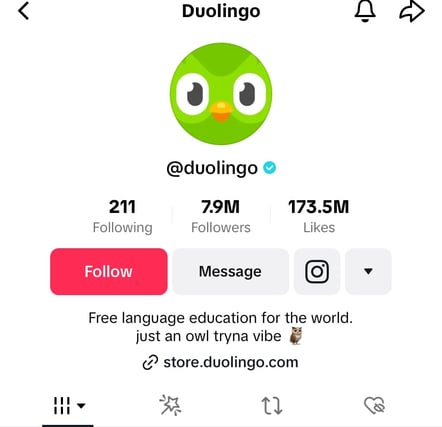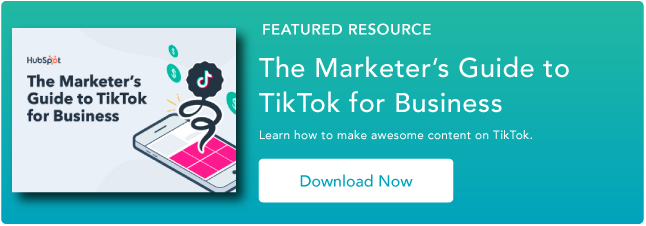Like many of the people who currently work in the industry, digital marketing was born in the 1990s. Since then, the industry has evolved at breakneck speed, sprouting many more types of marketing.
From search engine marketing to account-based marketing, every brand can use a combination of these tactics to attract its target audience and increase revenue.
Keep reading to discover the top marketing trends in 2023 and more.
![Download Now: Free Marketing Plan Template [Get Your Copy]](https://i4lead.com/wp-content/uploads/2023/11/aacfe6c7-71e6-4f49-979f-76099062afa0.png)
Types of Marketing
1. Traditional Marketing
Traditional marketing refers to brand promotion on offline channels before the rise of the internet. Think billboards, flyers, TV ads, and radio spots.
These marketing channels still play an essential role for some brands.
In fact, a global survey of CMOs found that more than 40% of marketing budgets go to offline channels — but today, marketers are increasingly relying on digital alternatives.
2. Digital Marketing
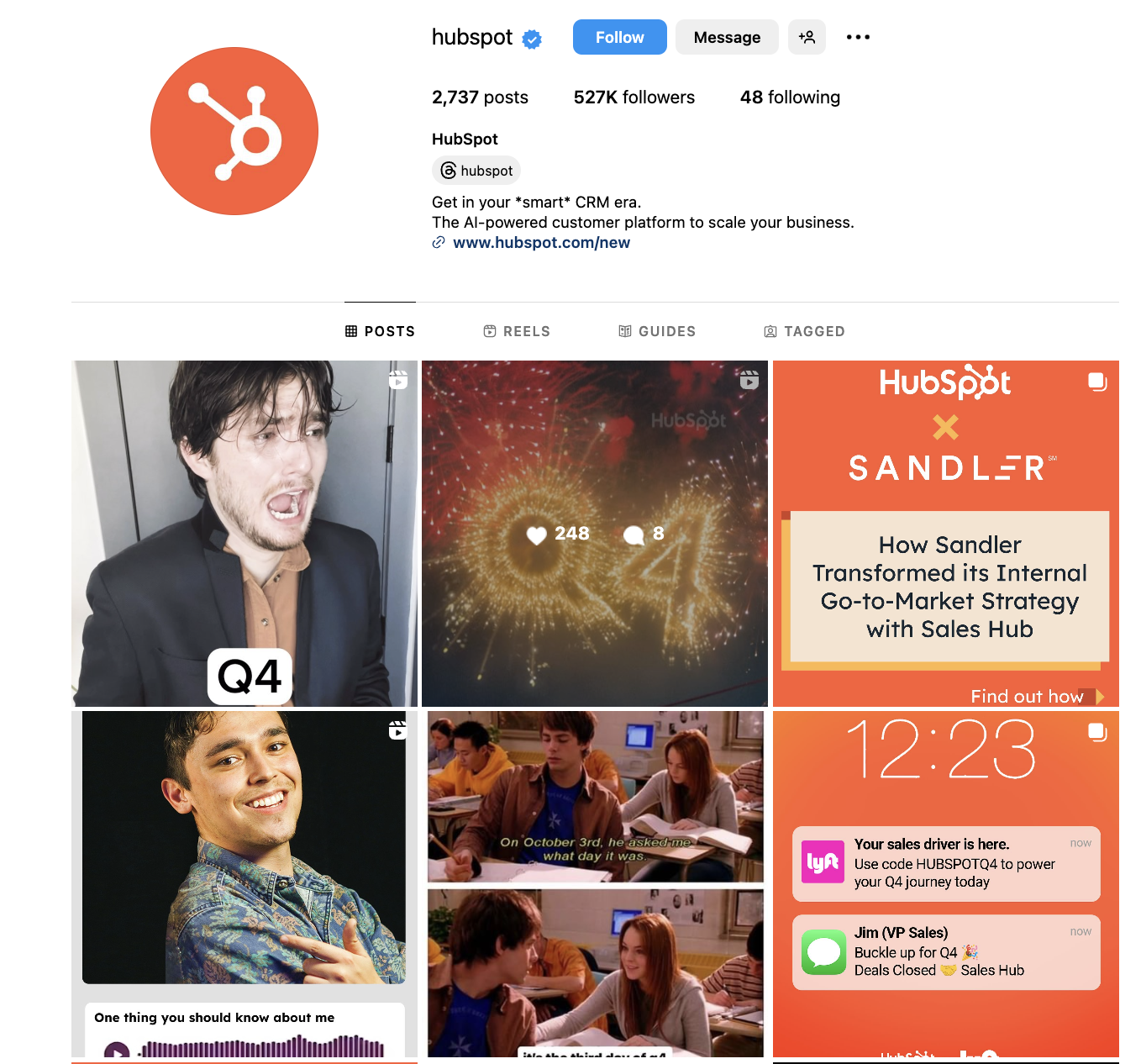
Image Source
In contrast to traditional marketing, digital marketing leverages a wide variety of previously unavailable technologies to reach audiences in new ways.
This is the fastest-growing type of marketing, encompassing all marketing efforts that live online.
Businesses investing in digital marketing use numerous digital channels, such as search engines, social media, email, websites, and more, to connect with their current and prospective customers.
3. Outbound Marketing
Outbound marketing refers to unsolicited, outgoing promotions such as cold calling, email blasts to purchased lists, and print ads.
This marketing method is called “outbound” because it involves pushing a message out to consumers to raise awareness of your products or services — regardless of whether consumers have demonstrated interest in them.
In many industries, outbound marketing has grown less effective, as consumers today are inundated with so many marketing interruptions that they often need to pay more attention to these messages.
4. Inbound Marketing
Inbound marketing, however, is focused on attracting customers rather than interrupting them.
Inbound leads are both more likely to convert and less expensive to acquire, with one recent report finding that inbound leads cost 67% less than outbound ones do.
While some inbound marketing tactics live offline, the majority fall under the umbrella of digital marketing, as consumers are empowered to do research online to help them progress through their buyer’s journeys.
Inbound is built on three pillars: Attract, engage, and delight. The initial goal is to create valuable content and experiences that resonate with your audience and attract them to your business.
The next step is to engage them through conversational tools like email marketing, chatbots, and, of course, continuously adding real value. Finally, delight them by acting as a long-term, empathetic advisor and expert.
5. Search Engine Marketing
Search engine marketing, or SEM, includes all strategies to ensure your business is visible on search engine results pages. With SEM, you can get your business to the top spot when a user searches for a particular keyword.
According to HubSpot’s 2023 State of Consumer Trends report, online search is the number one way today’s buyers discover new products — so it’s critical to make sure your business comes up on search platforms like Google or Bing.

![]()
There are two types of SEM: search engine optimization (SEO) for organic search results and pay-per-click (PPC) advertising for sponsored search engine results.
To get started with SEO, familiarize yourself with search engine ranking factors and common keywords relevant to your industry and products. Then, get proactive about producing content for search engines to index that use these terms.
Conversely, PPC involves bidding on keywords to get your ads placed through platforms like Google Ads. Consider investing in ad management tools that help you create and manage your PPC campaigns.

6. Content Marketing
As one of the best ways to attract your target audiences, content marketing is a critical component of an effective digital inbound marketing strategy.
That is probably why nearly nine in ten marketing professionals who have already invested in content marketing plan to maintain or increase that investment in 2023.
This form of marketing involves creating, publishing, and distributing content to your target audience through free and gated channels, such as social media platforms, blogs, videos, ebooks, and webinars.
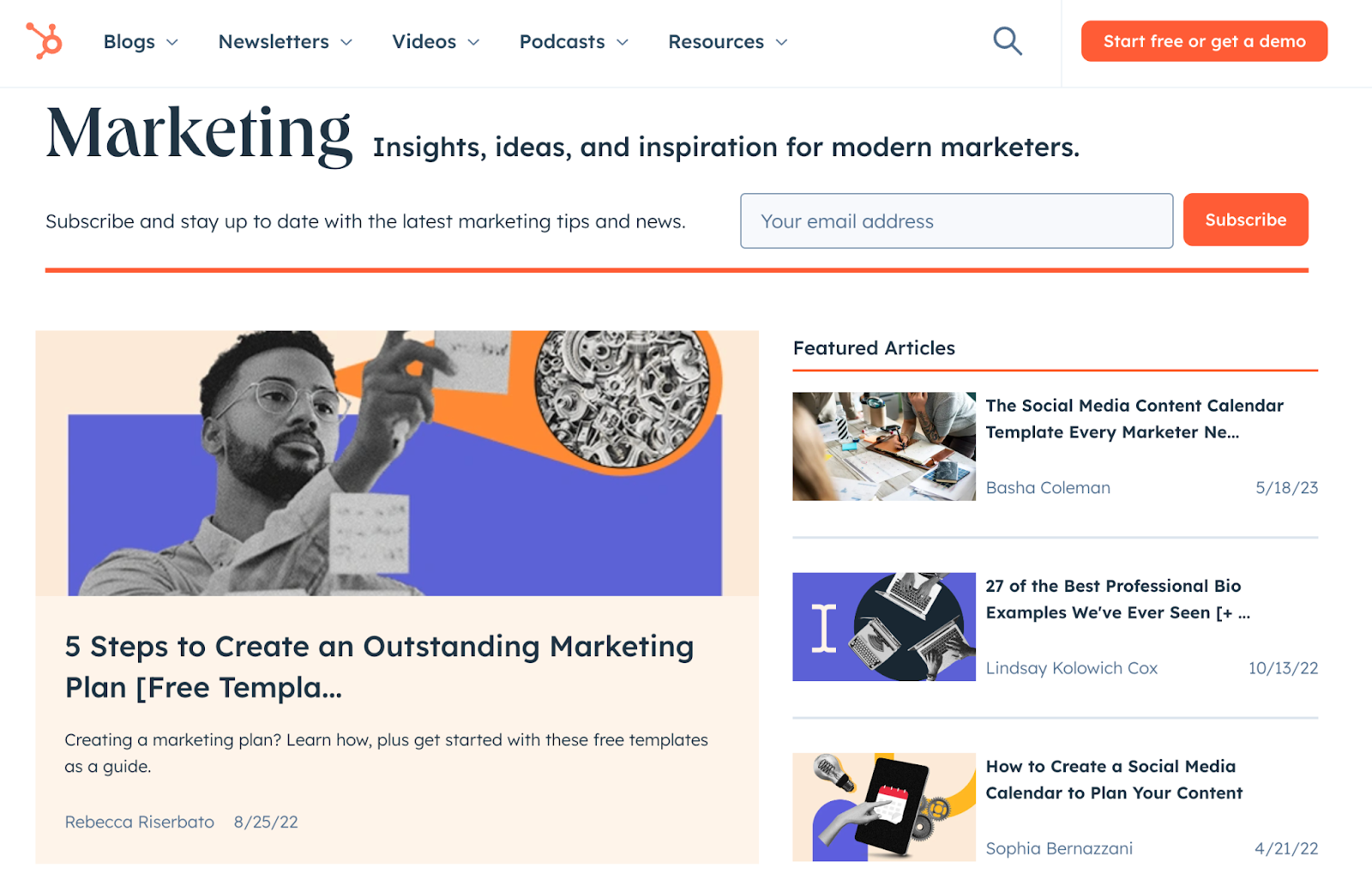
Image Source
The goal of content marketing is to help your audience along their buyer’s journey while adding value and providing a supportive, delightful experience.
To do so, first, identify common questions and concerns your buyers are likely to have before they are ready to purchase.
Then, create an editorial calendar to track when you will create and share content related to those topics. A content management system (CMS) can also help you stay organized and keep your content and publication schedule on track.
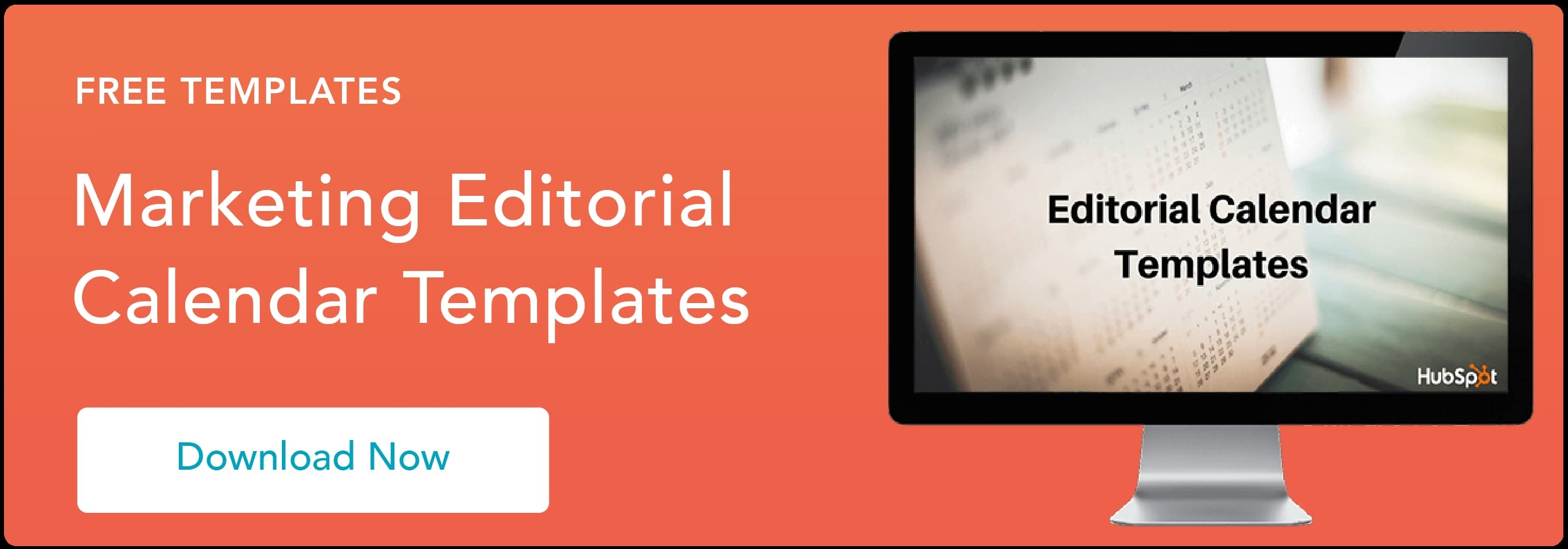
7. Social Media Marketing
With platforms like Facebook, Instagram, LinkedIn, and Twitter, brands can promote their businesses and engage with their audiences on a more personal basis.
Social media is an increasingly effective strategy to reach buyers of all ages, with 24% of Boomers and 46% of Gen X consumers surveyed in 2023 reporting that they discovered a new product on social media in the past three months.
However, with social media, two factors are crucial to success: relevance and consistency.
First, relevance: No one logs on to social media looking for something to purchase. As such, it’s essential to balance promotion with entertainment.
Compelling images and captions that encourage your audience to like, share, and comment will bring your brand that much closer to gaining a customer.

Image Source
Now, onto consistency: A consistent posting cadence will keep your followers returning. How can they get invested in your brand if they rarely see it on their timeline?
To make publishing content across platforms accessible, several social media tools automate the process.

8. Video Marketing
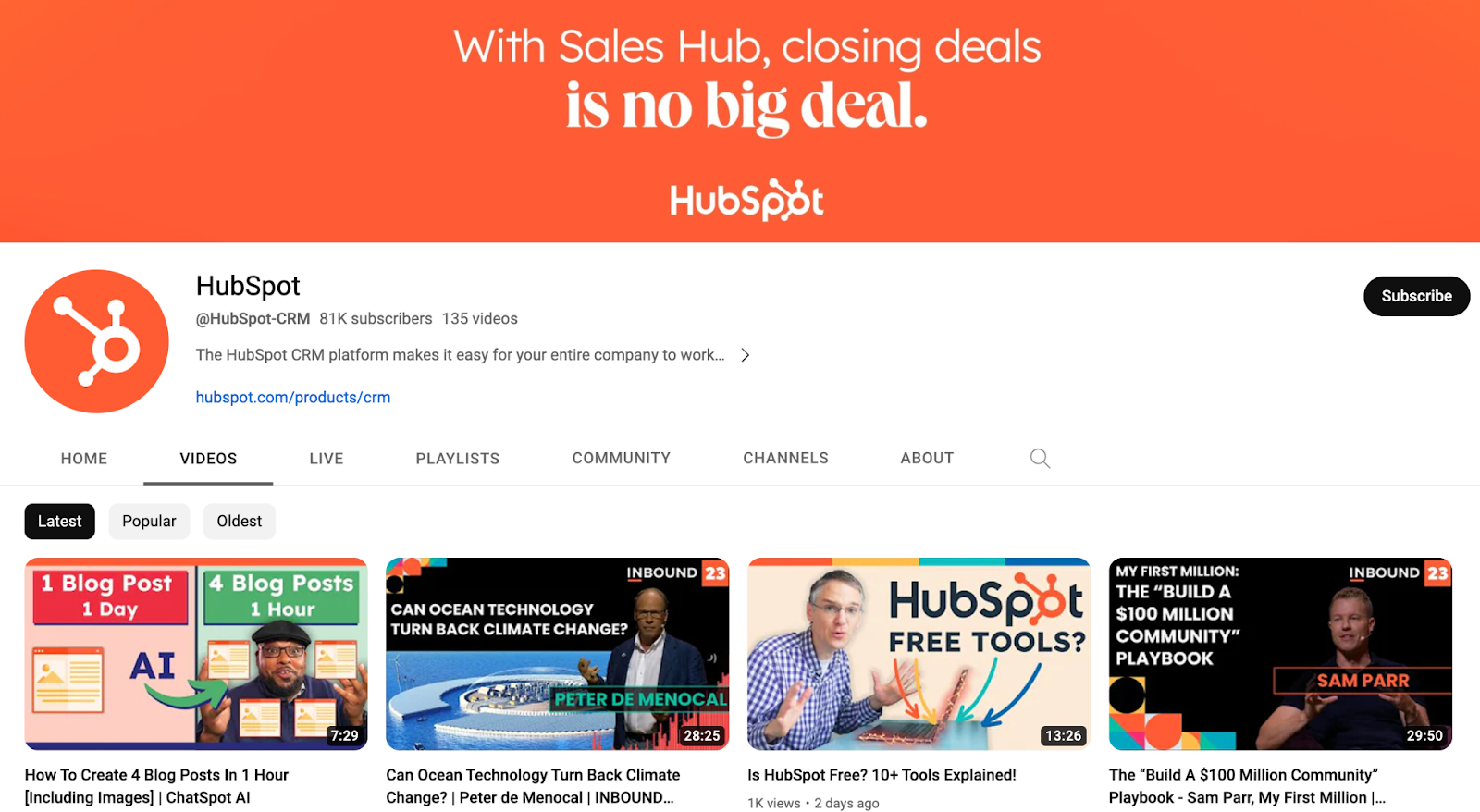
Image Source
According to a recent study, 87% of marketers say incorporating video into their marketing strategy has had a positive ROI.
Whether on your website, YouTube channel, email newsletters, and/or social media, video can boost brand awareness, generate conversions, and close deals.
Some video marketing apps even allow you to analyze, nurture, and score leads based on their activity.

9. Voice Marketing
Voice marketing refers both to optimizing your website for voice search by incorporating the right keywords and to initiatives that leverage smart speakers like Amazon Alexa and Google Home to add value to your audience and answer questions about their topics of interest.
Consider opportunities to get inventive by developing a Google Home action or an Alexa skill. For instance, Uber created an Alexa skill that allowed users to request a ride with a simple voice request.
Similarly, TED developed a feature that allowed Alexa users to search for and play TED talks based on topic, tone, or speaker.
These tools may be relatively new, but they’re increasingly popular among marketers.
HubSpot’s 2023 marketing trends survey found that 40% of marketing leaders who currently leverage some form of voice marketing plan to increase that investment in the next year.
10. Email Marketing
![]()

Email marketing connects brands to leads, prospects, and customers via email. Email campaigns can increase brand awareness, generate traffic to other channels, promote products or services, or nurture leads toward a purchase.
Moreover, one 2022 study found that returns on email marketing could be as high as $36 for every dollar invested.
Email can be a potent tool — but it’s essential to use it responsibly and within legal restrictions. Regulations like the GDPR and the CAN-SPAM Act require brands to comply with responsible commercial email practices, which boil down to three principles:
- Only email people expecting to hear from you (i.e., people who have opted in).
- Make it easy for subscribers to opt out.
- When you make contact, be transparent about who you are and why you’re emailing.
With these guardrails in mind, the first thing you’ll need to do is strategize how to build your email list or the database of contacts to whom you can send emails.
Standard methods include lead capture forms on your website or lead generation partnerships.
Then, you’ll need email marketing software and a CRM to send, track, and monitor the effectiveness of your emails.
To push your email strategy to the next level and maximize productivity, you may also want to look into email automation software that sends emails based on triggering criteria.
To learn more about the ins and outs of email marketing, take the free email marketing course from HubSpot Academy.

11. Conversational Marketing
Conversational marketing refers to any form of 1:1 conversation with your audience.
This is arguably one of the most natural ways to connect with customers, and research shows that conversations can be an effective way to remove friction from the buying process.
It’s essential to meet customers how, when, and where they want. As a result, these dialogues can happen across multiple channels.
This is more than just live chat: It extends to phone calls, texts, Facebook Messenger, email, Slack, and many other media.
When you‘re getting started, you’ll first identify the channels on which your audience is most active.
This may sound relatively straightforward, but things can get tricky when managing multiple channels while avoiding slow response times, internal miscommunication, or productivity loss.
That’s why it can be helpful to use conversational marketing tools, such as a unified inbox, to streamline your efforts.
12. Buzz Marketing
Buzz marketing is a viral marketing strategy that leverages refreshingly creative content, interactive events, and community influencers to generate word-of-mouth marketing and anticipation for a product or service a brand is about to launch.
This marketing approach is grounded in research-backed psychological effects such as FOMO (fear of missing out) and the Baader-Meinhof phenomenon (also known as the frequency illusion, where after encountering a new product, consumers start to feel like they’re seeing it everywhere).
Buzz marketing works best when you reach out to influencers early and put a plan in place to generate buzz surrounding your brand.
In addition, to track the effectiveness of your efforts, invest in social listening software that will help you keep a pulse on how your audience responds.
13. Influencer Marketing
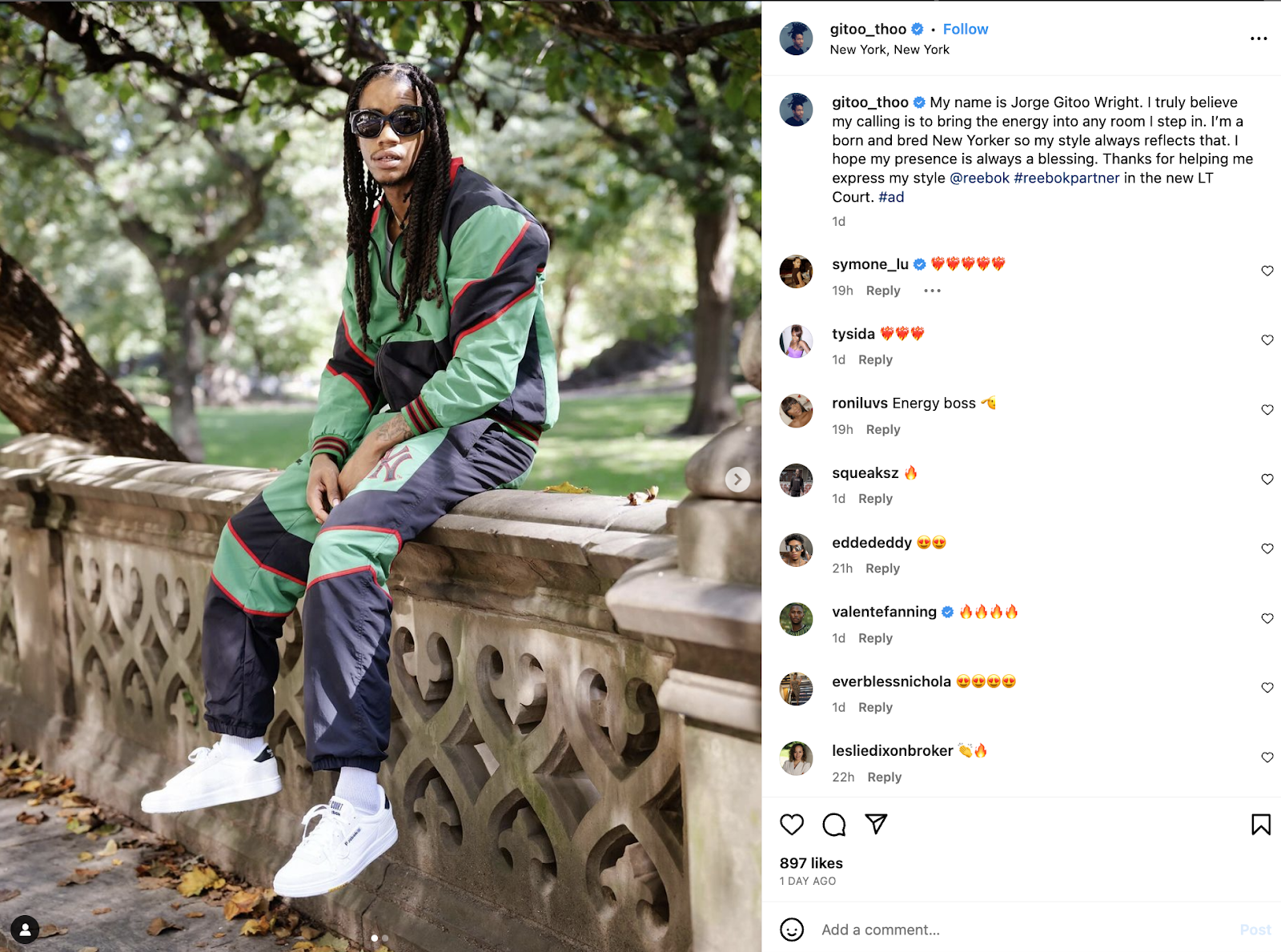
Image Source
By partnering with influencers in your space, influencer marketing enables your brand to tap into an existing community of highly engaged social media followers.
Influencers are considered experts in their niches and have built loyalty and trust with an audience you want to reach.
These programs are a substantial part of a modern marketing strategy:
Today, 88% of marketers have a dedicated influencer marketing budget, and one in four social media users report buying a product based on an influencer’s recommendation in 2023.
To get started with influencer marketing, you must first build your influencer marketing strategy and define what type of influencer you‘d like to work with.
Then, you’ll want to create criteria for your influencer to ensure they align with your strategy and budget.
Factors to consider include their niche, the size of their audience, and their current metrics. From there, you can find influencers and reach out to them by:
- Manually reaching out on social media.
- Using an influencer marketing platform.
- Hiring an agency to do the research and outreach for you.

14. Acquisition Marketing
The goal of any marketing strategy is to attract and retain customers—however, different types of marketing focus on other, specific stages of the buyer’s journey.
Acquisition marketing focuses on the “attract” and “convert” phases, in which you’re aiming to turn strangers into sales-qualified leads.
What differentiates acquisition from other marketing types is that it extends beyond the marketing team, often involving collaboration with customer service and success teams.
Why? Because satisfied customers are your biggest promoters.
Acquisition marketing can involve several tactics to create a lead generation engine for your organization.
These tactics can include offering freemium products, launching education hubs, tightening the copywriting on your website, conversion rate optimization, and lead optimization.
It may include a lead optimization and nurturing strategy to facilitate the hand-off between marketing and sales.
15. Contextual Marketing
Contextual marketing refers to efforts that target online users with different ads on websites and social media networks based on their unique online browsing behavior.
More than 40% of respondents in a recent study said that they’re more likely to buy from brands that tailor ads specifically to them, suggesting that this kind of context-specific approach can have a significant impact on your conversion rates.
So, what does it take to put this into practice?
A CRM combined with powerful marketing tools such as intelligent CTAs can make a website seem more like a “choose your own adventure” story, empowering users to find the information they need and take action quickly and effectively.
Of course, contextual marketing takes strategy and careful planning. To start on the right foot, look at HubSpot’s free contextual marketing course.
16. Personalized Marketing

Image Source
Personalized marketing aims to create a customized marketing experience for every user across your brand.
This can be as simple as adding a user’s name in the subject line of an email or sending product recommendations based on past purchases.
For example, software products like Versium Reach make it easy for marketers to target their B2B or B2C customers with robust, personalized audience insights.
To be sure, it’s easy for this kind of marketing to come across as creepy accidentally.
However, studies suggest that consumers are surprisingly comfortable with personalized experiences, mainly when they boost convenience and enable a more enjoyable purchasing journey.
For example, one recent report found that 7 in 10 consumers are okay with personalization as long as marketers only use data that consumers have knowingly and directly shared with them.
17. Brand Marketing
Brand marketing encompasses everything you do to shape your brand’s public perception and forge an emotional connection with your target audience. This includes storytelling, creativity, humor, and inspiration.
The goal is to be thought-provoking and generate productive conversations so your brand is remembered and associated with positive sentiment.
Don’t underestimate the power of a compelling story: Research from Harvard psychologist Jerome Bruner has shown that facts are 22 times more likely to be remembered if shared as part of a story.
To begin brand marketing, you must deeply understand your buyer persona and what resonates with them. You must also consider your position in the market and what differentiates you from your competitors.
This can help shape your values and what you stand for, giving you crucial fodder for your storytelling campaigns.

18. Stealth Marketing
Stealth marketing occurs when brands promote their products or services to consumers who don’t realize they’re being marketed to.
For instance, if you’re watching a television show and a branded product is integrated into the shot, you might have just been on the receiving end of a stealth marketing campaign.
As long as you and any influencers you work with stay within the bounds of any relevant ad disclosure regulations — and avoid unethical or misleading campaigns — stealth marketing can be an effective way to advertise your products.
But for this marketing style to work, brands have to find opportunities that align with their brand identity and values.
19. Guerrilla Marketing
Guerrilla marketing spreads brand awareness by placing bold, clever brand activations in high-traffic physical locations.
Examples of guerilla marketing include altering outdoor urban environments, promoting during a live event (without permission from sponsors or organizers), public stunts, and treasure hunts.
This can be a cost-effective way to garner widespread attention.
However, unconventional guerilla tactics can also backfire if the audience needs to understand them, comes across as insensitive, or is interrupted by weather conditions, law enforcement, or other factors beyond the brand’s control.
If you’re looking for inspiration, look at this list of effective guerilla marketing examples, from Bounty’s human-sized popsicles and coffee cups littering the streets of New York to Deadpool’s Tinder profile.
20. Native Marketing
Native marketing is when brands customize their ads and other content to blend in as seamlessly as possible with the feel, look, and function of the platform on which they’ll be published.
This is important whenever brands collaborate with publishers to create and distribute sponsored content to their audience.
By leveraging their editorial expertise while ensuring that ads are designed not to disrupt the user experience, brands can increase conversion rates and drive brand awareness.
Indeed, native ads are a huge component of many companies’ marketing strategies, with native display ad spending in the U.S. expected to reach nearly $100 billion in 2023.
There are lots of creative ways to approach native marketing. For instance, a recipe blogger could feature a sponsored guest post from a wine collector titled “The Best Wine-Infused Desserts for the Holiday Season.”
This would fit perfectly alongside the blog’s standard recipe posts, serving as a subtle yet effective promotion for the wine brand.
To benefit from native marketing, you must contact media publications or go through a native advertising network that helps find and facilitate ad placement.
21. Affiliate Marketing
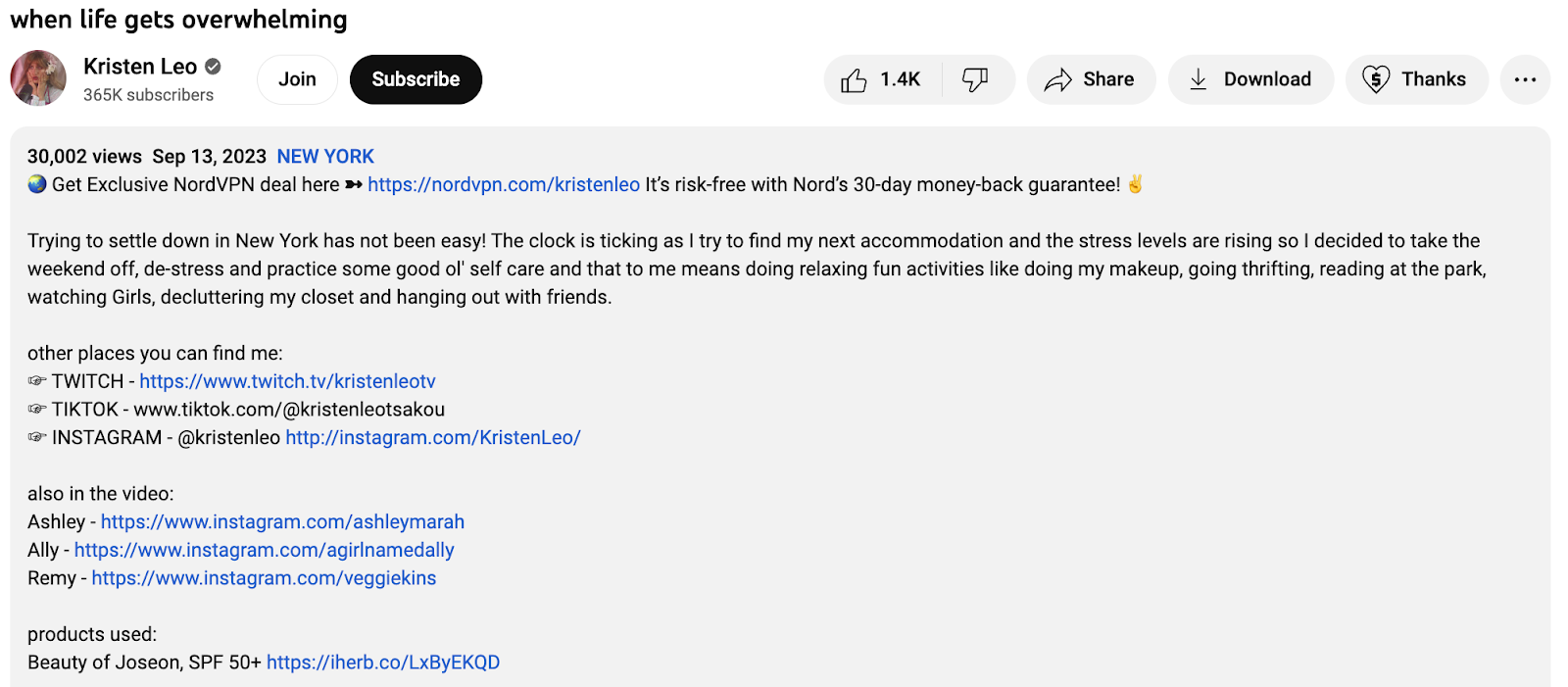
Image Source
When a business rewards another brand — an affiliate or affiliate partner — with a commission for each purchase a customer makes through the affiliate‘s promotion tactics, that’s affiliate marketing.
This approach is trendy among influencers, but it can also be used by brands to promote other companies’ products or services that align with their own. 83% of marketers use some form of affiliate marketing to raise brand recognition.
If you already have marketing assets performing well, such as a website that consistently generates leads or an engaged social media network, affiliate marketing is a great way to leverage those assets further.
Choose a product or brand that closely aligns with what you sell (but does not compete with you) and promote it to your audience.
Affiliate marketing is also a cost-effective way to spread awareness of your brand and an excellent revenue-generating alternative to influencer marketing.
And the best part is, when launching an affiliate program, every business can design its own rules to meet its unique needs.
22. Partner Marketing
Partner marketing, also known as co-marketing, is a marketing collaboration in which two or more brands partner up on a marketing campaign and share the results.
It’s a great lead-generation tool that allows brands to tap into an audience they may still need to reach.
The idea of marketing partnerships has been introduced previously.
Still, this approach has gained popularity recently: In 2022, marketers allocated 40% of their marketing budgets to partnership activities, and 72% planned to increase their partnership investment further.
For partnerships to work, brands must have complementary products or services and similar user personas. Most importantly, they must also align on their shared goals and embrace a mindset of cooperation and teamwork.

23. Product Marketing
Product marketing isn’t just taking product pictures or running launch campaigns. It’s about driving demand for a product and its adoption through consistent positioning, messaging, and market research.
Product marketers sit at the intersection of product, sales, marketing, and customer success teams.
It’s a critical role for any company, which may be why more than one in three marketing leaders surveyed in 2023 plan to increase recruitment efforts for product marketing managers.
These product-focused marketers work with various organizational functions, supporting sales enablement and aligned marketing strategies.
24. Account-Based Marketing
Account-based marketing (ABM) is a hyper-focused marketing strategy where teams treat an individual prospect or customer as their market.
These marketing teams create content, host events, and launch campaigns dedicated to the specific people associated with that single account rather than targeting an entire industry or territory.
This strategy allows brands to design personalized campaigns for their ideal clients and dedicate their time and resources to prospects exhibiting high-intent behaviors.
A recent study found that two in three brands and 70% of marketers leverage ABM in their marketing efforts. Here’s how you can join them:
- Start by identifying key accounts.
- Next, create messaging based on issues that matter to them most.
- Finally, learn how to put that messaging into action with HubSpot’s introductory ABM lesson.
To streamline your efforts, you can also determine whether ABM software might be a good fit for your team.
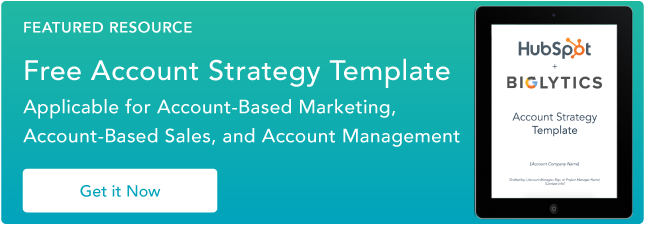
25. Customer Marketing
In contrast to acquisition marketing, where the focus is on acquiring new customers, customer marketing is focused on retaining existing customers.
The goal is to turn your customers into long-term brand advocates by delighting them with your product or service and providing excellent customer service.
The cost of customer acquisition is much higher than the cost to retain or upsell existing customers, so brands stand to gain a lot from investing in this type of marketing.
But to reap these benefits, customer marketing teams must constantly work to improve the customer experience.
That means doing everything you can to ensure your customers are left with a great impression after you’ve provided them with your product or service.
Simple ways to do this include eliminating friction in the customer service process, providing self-service resources like online knowledge bases, and using customer service software to manage and automate interactions.
26. Word-of-Mouth Marketing
Whose opinion do you trust more: Your friend‘s or a brand’s? The answer is obvious.
That’s why word-of-mouth marketing is so powerful. According to a recent Nielsen survey, 92% of consumers put more stock in recommendations from friends and family than in any form of advertising.
Of course, you can’t force it to happen — but you can position your brand in a way that makes it more likely. For example, the following strategies can help make it easy for satisfied customers to spread the word about your brand:
- Creating shareable, viral-worthy content.
- Offering referral and loyalty programs.
- Requesting reviews after providing a product or service.
27. Relationship Marketing
Relationship marketing is a type of customer marketing that focuses on cultivating more profound, more meaningful relationships with customers to foster long-term brand loyalty.
These efforts aren’t focused on short-term wins or sales transactions. Instead, they’re about creating true brand evangelists who promote your brand across their networks.
The key to doing this effectively is to focus on delighting the customers who you know are already satisfied with your brand.
Start using customer feedback software to run a Net Promoter Score (NPS) campaign to help you identify those customers.
Then, develop ways to transform those happy customers into raving fans. From there, you can request that they leave a testimonial, participate in a case study, or help you achieve your goals another way.
28. User-Generated Marketing
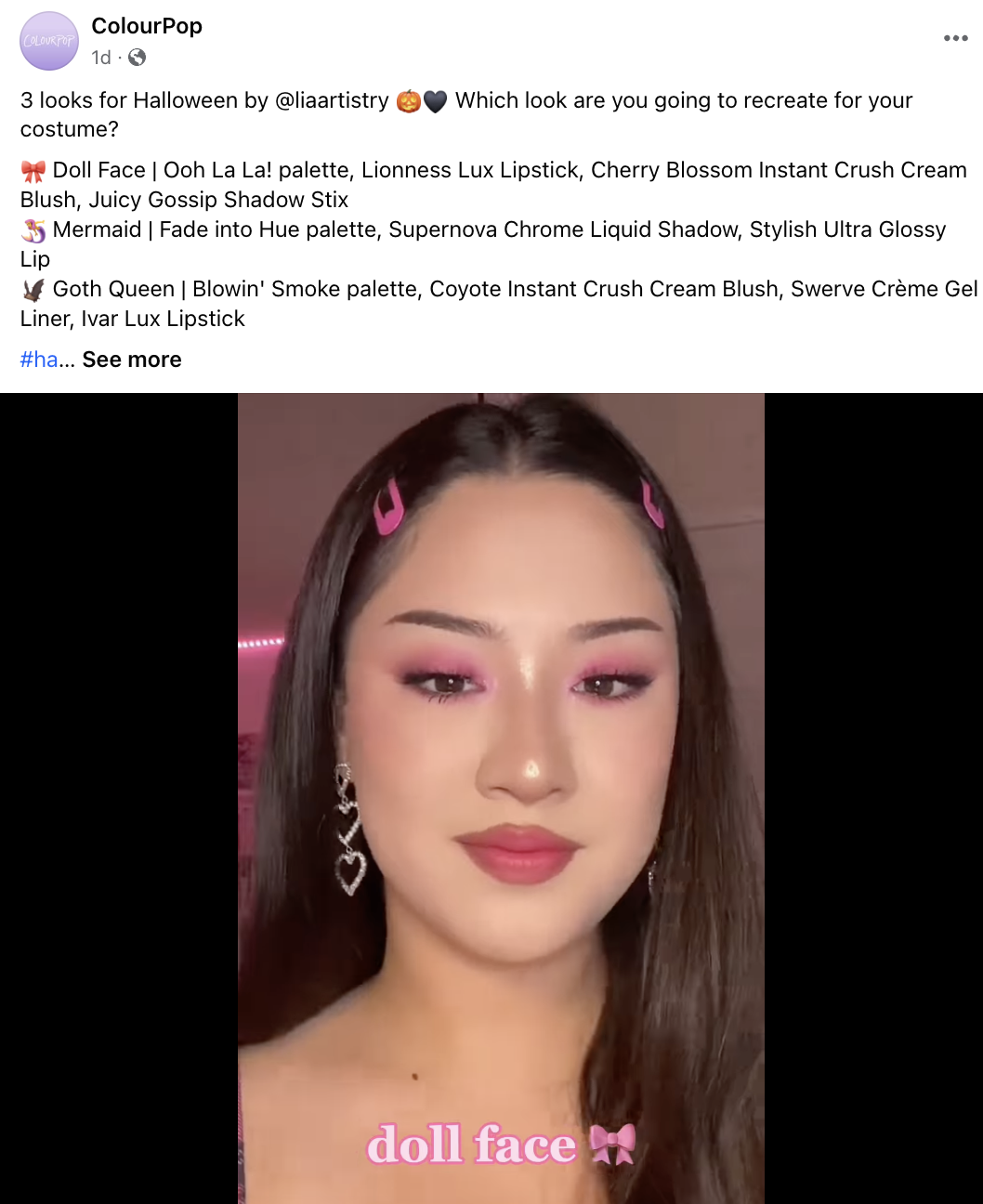
Image Source
User-generated marketing is when businesses leverage their audiences to participate in creating marketing materials.
There are many creative ways to encourage users to generate this content. You could run a social media hashtag challenge asking your followers to develop a jingle.
Or invite users to share pictures or videos of themselves using your product and launch a raffle giveaway to incentivize people further to participate.
Why do brands use this approach? More than two in three marketers agree that social contests, campaigns, and other user-generated content boost engagement and conversion rates.
Plus, it’s cost-effective, builds stronger connections with your audience, and increases brand awareness.
29. Campus Marketing
Some brands target college students, and who better to market to them than their peers?
Campus marketing refers to promoting products or services to students on campus, often in collaboration with student brand ambassadors who help bring awareness to the business.
This strategy is particularly effective because U.S. undergrads spend nearly 70% of their waking hours on campus.
As such, it’s not uncommon to find campus marketers promoting products at event booths, hosting their events, or handing out giveaways on the quad.
30. Proximity Marketing
Proximity marketing is a local, highly-targeted marketing strategy that leverages users’ location to show them relevant product or service promotions.
For instance, if you’re walking by an ice cream shop, you may receive a notification informing you of a special discount for a flavor at that shop. There are a few ways marketers can implement proximity marketing campaigns:
- Bluetooth beacons.
- Wi-Fi.
- QR codes.
- NFC.
- Geofencing.
As these technologies advance, the proximity marketing industry will grow to nearly $300 billion by 2030.
And it’s more than location-specific notifications: Brands can also use these tools to organize treasure hunts, retarget users who don’t make a purchase, or simply learn more about their users’ behavior.
31. Event Marketing
You‘ve got an event coming up to launch a new product. Now, how do you get your target audience to show up? That’s where event marketing comes into play.
In a survey of more than a thousand global marketing leaders, more than half listed in-person or virtual events as one of the most effective marketing channels.
An event — a workshop, seminar, trade show, conference, or pop-up shop — helps brands connect directly with their target audience and build lasting relationships.
But making the most of these (often expensive) investments requires brands to plan a comprehensive promotion strategy, develop creative assets that drive anticipation, and determine the best channels to spread awareness.

32. Experiential Marketing
Experiential marketing goes beyond traditional event marketing to encompass in-person and virtual events, experiences, and interactions that forge lasting emotional connections between a brand and its target audience.
These initiatives take event marketing a step further, with the goal of crafting a truly magical experience for attendees.
Experiential marketing provides participants with something they can take with them after the event is over — other than just information, of course.
Therefore, it’s hardly surprising that 83% of marketers plan to continue or increase their experiential marketing investments.
At HubSpot, we do our best to make our INBOUND conference an immersive experience that extends beyond breakout sessions to include networking opportunities, parties and happy hours, food truck lunches, and other unique events.
Instead of a conference, INBOUND becomes a celebration.
33. Interactive Marketing
Interactive marketing is a trigger-based marketing strategy that creates a dialogue between a brand and its audience.
Based on certain predefined trigger events, the brand automatically adapts its approach, making it possible to respond to users’ behavior in real-time.
For instance, let‘s say you’re searching for a memoir on a bookstore’s website, but you log off without making a purchase. The next time you log on, you may see recommendations for more memoirs from other authors.
This strategy adjusts to meet consumers where they’re at, boosting conversion rates and enabling a superior customer experience.
34. Global Marketing
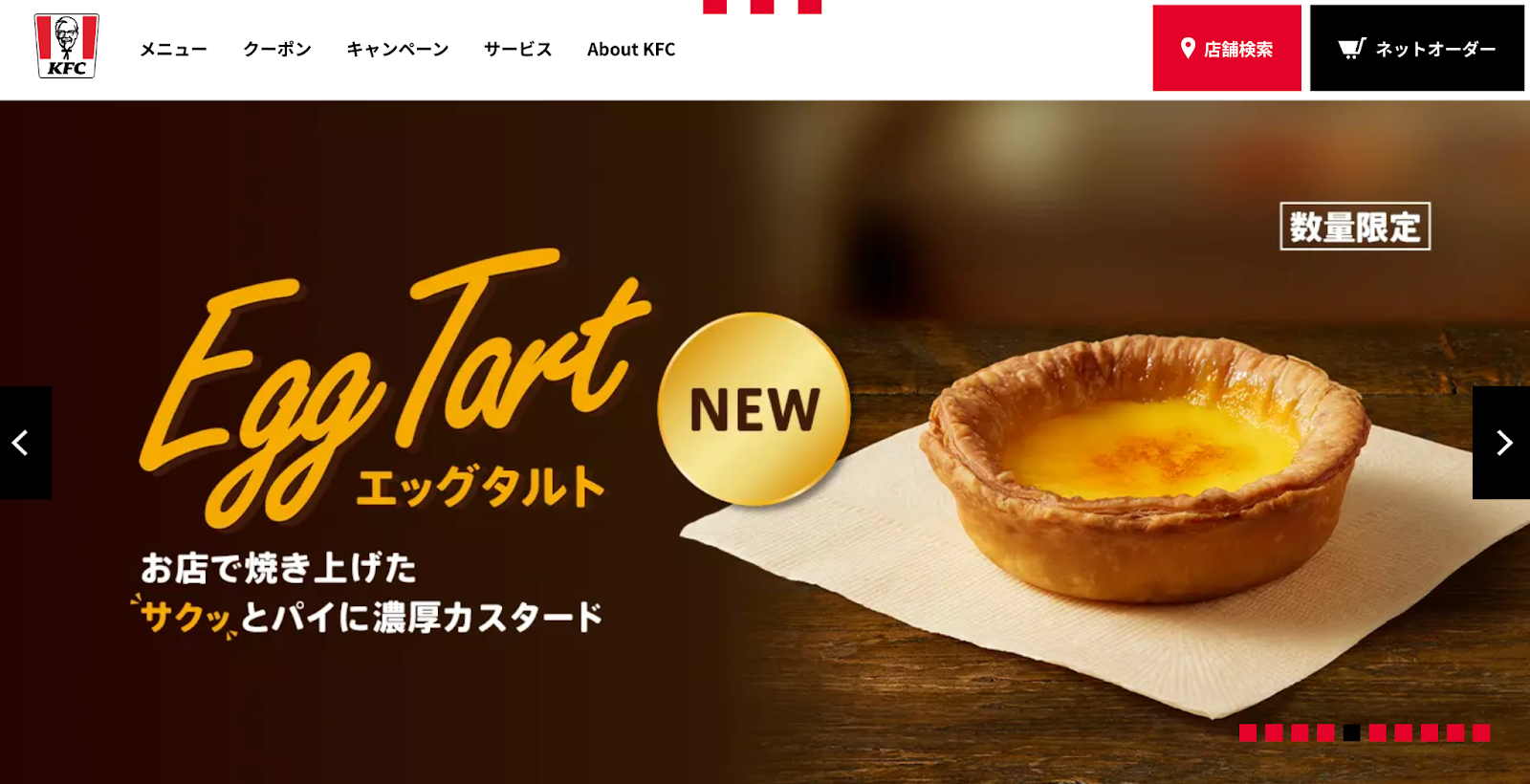
Image Source
Global marketing refers to the process of scaling your marketing efforts beyond your home base to appeal to new audiences around the world.
This is no small task: Effective global marketing requires lots of market research to determine where a product or service may best resonate and how best to market it in that region.
Take, for instance, a food company based in Germany.
If the team decides to expand to the United States, it may be necessary to make changes in menu items, packaging, pricing, and advertising that will be a better fit for an American audience.
As the world grows ever more interconnected, many businesses will find themselves facing similar challenges.
In fact, a recent survey found that growing a global audience was one of the top two issues today’s marketing leaders struggle with.
To address this, marketers will need to adopt a global mindset and invest in a comprehensive global marketing strategy.
35. Multicultural Marketing
Of course, geographical expansion isn’t the only time a brand will encounter new audiences.
To target people of different ethnicities and cultures within a brand’s overarching audience, developing and executing a multicultural marketing strategy is a must — and as populations grow more diverse, the need for a multicultural approach will only become more urgent.
This involves in-depth research to understand the needs and values of these diverse communities, as well as careful work to figure out the right messaging to resonate with those groups.
36. Informative Marketing
A lot of marketing tactics focus on emotions, but sometimes, it makes more sense to focus your messaging on facts and figures. This sort of approach is known as informative marketing.
As researchers from Indeed explain:
“Consumers value informative marketing campaigns that allow them to understand the value of promoted material. Rather than abstract visuals, demonstrating product features can show audiences how a product might be beneficial for them to have.”
That means highlighting the benefits of your product‘s features, how they solve your customers’ problems, and how they compare to those of your competitors.
37. Persuasive Marketing
Unlike informative marketing, persuasive marketing intentionally taps into users’ emotions. These campaigns aim to make their audience feel something, to associate those emotions with a brand, and to trigger desired actions.
There are countless techniques that marketers can use to persuade consumers to purchase a product or service.
For example, the scarcity principle refers to the psychological phenomenon that people are more likely to buy a product if they think it’s unlikely to be available for much longer.
Similarly, studies have shown that prices ending in “.99” are perceived to be significantly lower than those that are just one cent higher, making consumers more likely to buy despite the negligible actual difference in price.
Of course, as with any marketing effort, these strategies only work if you understand your buyer persona and know what will resonate with your target audience.
38. Cause Marketing
With cause marketing, brands tie themselves to social issues while promoting their goods. For instance, a company may advertise that a purchase from their brand will result in a donation to a certain charity.
Cause marketing can also go beyond a single campaign. Some brands’ entire identity aligns with a particular issue. For instance, luxury jewelry brand Civil donates 20% of its profits to underrepresented founders and entrepreneurs.
Whether it’s temporary or long-term, there are three questions you should consider before starting with cause marketing:
- What causes does my brand care most about?
- How can we leverage our position to support those causes?
- How can we tell our prospects and customers about our efforts and encourage them to get involved?
39. Controversial Marketing
Controversial marketing uses shocking, controversial topics to drive attention to a campaign. Importantly, this isn’t about polarizing audiences.
Effective controversial marketing aims to grab people’s attention and spark discussions but doesn’t drive consumers away.
There are pros and cons to this approach. On one hand, controversial stunts have the potential to go viral and generate buzz around your brand.
However, there‘s a risk that you’ll turn off potential customers and negatively impact your brand’s image.
Indeed, there have been many examples of failed controversial marketing plays — from Burger King’s moldy whopper ad to McDonald’s infamous “dead dad” commercial — so be sure to tread carefully when going this route.
40. Field Marketing
Field marketing, also known as field selling, is a form of traditional marketing that involves going out into a community to promote your products or services directly to your target audience.
You can do this by distributing product samples, offering product demos, or leafleting.
Despite the rising popularity of digital marketing strategies, marketing leaders agree that there’s still an important place for these in-person marketing efforts.
More than half of recently surveyed marketers listed physical events and tradeshows, as well as customer communities and groups, among the top most effective marketing channels.
41. Neuromarketing
Neuromarketing leverages neuroscience to gain insight into consumers’ decisions and predict their behaviors.
For example, P&G conducted a study in which researchers used an eye-tracking tool to measure user engagement levels when viewing different kinds of mobile ads.
This empowered its marketing team to identify the messages that were most emotionally resonant with their target audience and optimize their ad campaigns accordingly.
Neuromarketing studies like these can involve tracking eye movements, analyzing brain scans, and measuring various physiological functions in response to marketing stimuli, all of which can be used to inform data-driven marketing decisions.
The Best Type of Marketing
There’s no right or wrong way to do marketing — as long as it connects with your desired audience and provides a return on investment.
Most companies use a combination of the strategies outlined above to generate leads and acquire customers.
Ultimately, you’ll want to choose what makes the most sense for your business based on your unique product, audience, and resources.


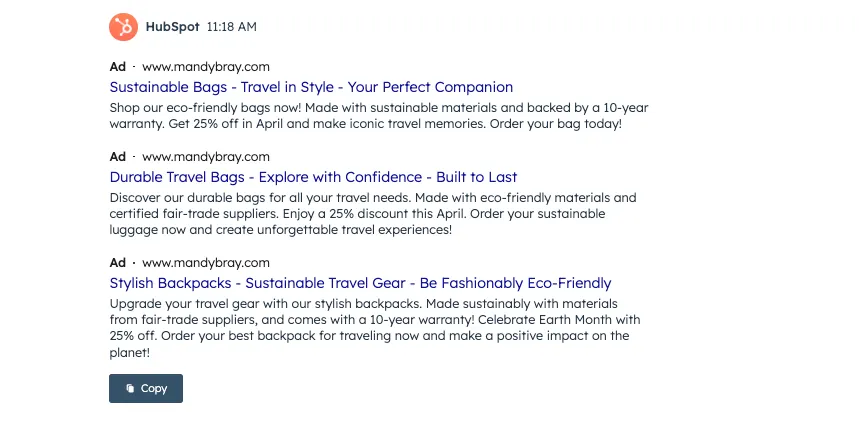
![]()



![→ Download Now: 12 Resume Templates [Free Download]](https://i4lead.com/wp-content/uploads/2023/11/4ec95757-585e-40cf-9189-6b3885074e98.png)



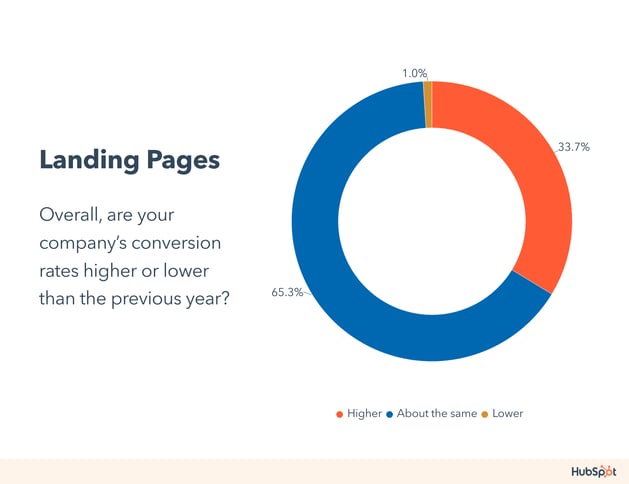

 The interesting part? Popups make up about 66% of all signup forms. Compare that to landing pages that make up 5.1% of all signup forms, and what you see is an opportunity to create more landing pages and maximize conversions.
The interesting part? Popups make up about 66% of all signup forms. Compare that to landing pages that make up 5.1% of all signup forms, and what you see is an opportunity to create more landing pages and maximize conversions.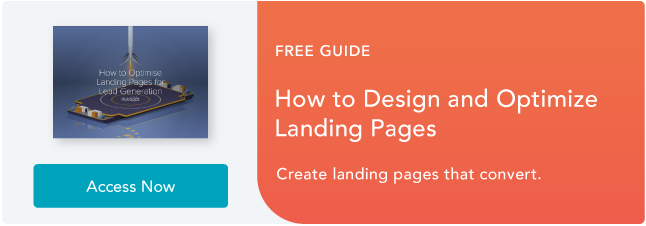

![Download Now: 50+ Remote Team-Building Activities [Free Ebook]](https://i4lead.com/wp-content/uploads/2023/11/204394e2-023a-45c8-a6eb-d5dd263640b2.png)
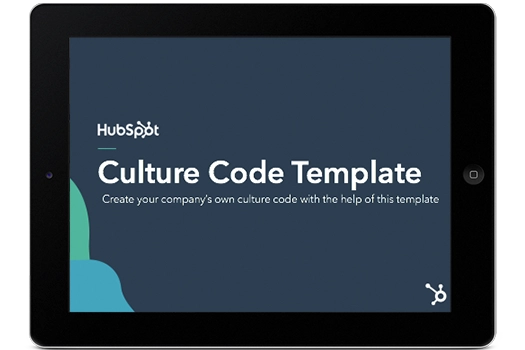



![Download Now: Free Marketing Plan Template [Get Your Copy]](https://i4lead.com/wp-content/uploads/2023/11/aacfe6c7-71e6-4f49-979f-76099062afa0.png)
















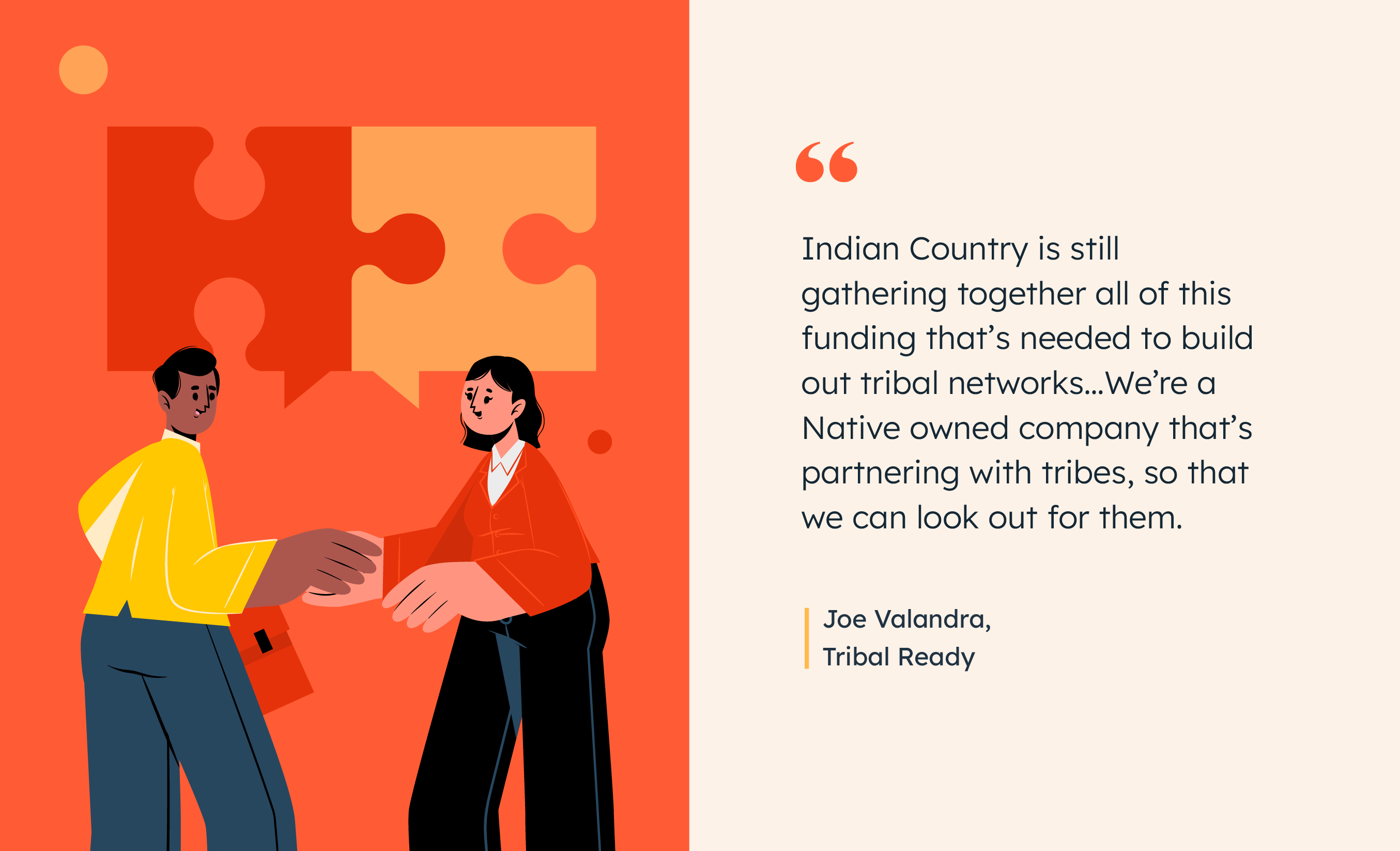

![Free Ebook: The Marketer's Guide to TikTok for Business [Download Now]](https://i4lead.com/wp-content/uploads/2023/11/2c7242e4-ad54-4f63-8627-a15aa6a2ea50.png)
